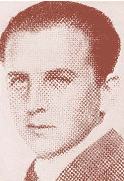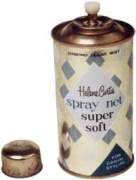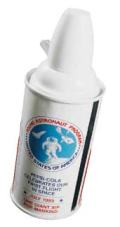Highlights of the Aerosol
 1920-1950
1920-1950
In 1927, Erik Rotheim, a Norwegian engineer filed the patent for what would become a phenomenal success story: the aerosol dispenser. The successful development of mass produced aerosols occurred in the USA during the late 40s. It was an insecticide called the ‘bug bomb’ developed by Goodhue & Sullivan.
American soldiers used it to fight insect borne diseases in the Pacific; 50 million units were produced during World War II. The aerosol package expanded soon after the war. In 1947, 4.3 million units were manufactured for civilian applications. Production increased steadily and soon crossed the Atlantic Ocean to reach Europe.
1950-1960
Insecticides and hairsprays were the first products to hit the European market in the early 50s. Air fresheners, deodorants and shaving foams soon followed and approximately 70 million aerosols were produced in Europe during this period.
 1960-1970
1960-1970
In the early 60s the golden age of the aerosol industry emerged. A wider range of aerosol products came onto the market; they were originally made of extruded aluminium but were soon made of tinplate as well.
1970-1980
Production stunned again, reaching a total 2.2 billion units; an increase of 80 % over the decade!
In the late 70s, a tidal wave of environmental concern captured the world’s attention after the publication of the ‘Molina/Rowland’ report on the ozone layer. The aerosol came to represent for the role that ChloroFluoroCarbons (CFCs) were thought to play in the thinning of the upper ozone layer, despite its relatively minor contribution to the phenomenon.
1980-1990
In the 80s, the aerosol industry voluntarily moved away from CFCs to alternative propellants and FEA was the first organisation to formalise a voluntary environmental agreement with the European Commission (Commission Recommendation 89/349/EEC).
European consumer aerosols (except for a small number of medical products such as asthma inhalers) have not contained CFCs since 1989.
Production during this decade rose by 35 % and reached 3 billion units.
 1990-2000
1990-2000
The protection of the environment has become a European key issue since the early 90s.
Research & Development focused on propellants, packaging and ingredients to make the aerosol a high performance product.
The bicompartimented aerosol offered a new generation of aerosol technology and started to expand rapidly.
Following the use of alternative propellants to CFCs, the aerosol industry demonstrated by various studies that empty aerosols can be included in the normal household waste packaging stream effectively without causing a hazard. As a result, post-consumer aerosols started being recycled successfully around the world.
European aerosol production steadily continued and reached 4.4 billion, a 48 % growth over the decade, positioning Europe as the production leader worldwide.
2000-2010
In 2002 FEA adopted its Code of Practice on HFC use. HydroFluoroCarbons (HFCs), which have no impact on the ozone layer but still participate to the climate change, should only be used in the aerosol industry in applications where there are no other safe, practical, economic or environmentally acceptable alternatives i.e. only in technical applications where ignition sources are present or pharmaceutical applications.
Aerosol packages were presented in new shapes and were more attractive and ergonomic. Europe still led in aerosol production worldwide with 5 billion units produced. Nearly 12 billion were produced worldwide in 2008.
2010-2020
Compressed gas propellants are used more widely and the aerosol industry focuses on the production of more cost efficient aerosol containers. Efforts are maximised to improve new systems like self-compressing bags while plastic aerosols further develop in the market.
The future
Embracing the circular economy through multi-stakeholder dialogues to ensure even greater efficiency of aerosol dispensers recycling.
